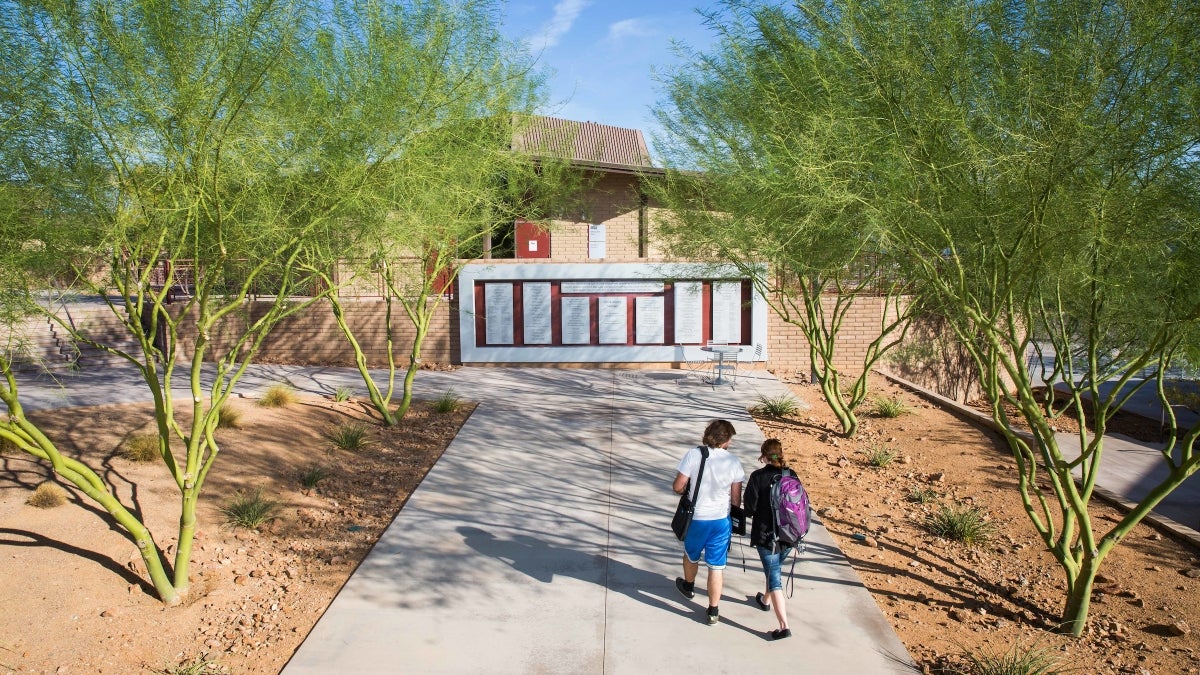About two years ago, when the full force of California’s drought came to bear, green lawns turned faces red as “drought shaming” became a social media pastime.
Shots of sprinklers spattering sidewalks, replete with full addresses. Aerial photos of celebrity homes with lush grounds (Cher, Oprah, Streisand, Kardashian — Twitter’s watching you). “The new class warfare,” one publication dubbed it.
In Tucson, a turf lawn has been seen as the green badge of ignorance for decades.
Western water woes, and accompanying municipal incentives to tear out the turf and replace it with what is being referred to as “climate-appropriate” vegetation, have given rise to a new popularity in xeriscaping. In 2015, almost 80 cities paid residents to rip out the rye. Smile. You’re doing the right thing.
A recent study by a pair of Arizona State University researchers, however, revealed that xeriscaped yards contain higher levels of nitrate than turf yards. Downstream, as irrigation transports nitrate into the soil, those levels could affect water quality, leading to algal blooms and wreaking havoc with aquatic ecosystems.
When a homeowner decides to xeriscape and rips out the lawn, either the turf is killed and removed or killed and tilled into the soil. If it’s tilled into the soil, organic material left behind decomposes and nitrates build up.
Xeriscaped yards had more nitrates than yards with lawns and increased in nitrate levels until 14 to 18 years after conversion. Older xeriscaped yards had similar nitrate levels to turf yards.
“The amounts we found are comparable to what you’d find in an agricultural landscape,” said Hannah Heavenrich, lead author of the study and a research specialist in the School of Life Sciences. “It’s sort of a big deal because in an agricultural landscape, where they’re irrigating a lot, that water is flowing off the landscape into irrigation ditches and eventually into things like canals or retention basins.”
In Arizona, this is less of a problem because natural bodies of water are few and far between.
“That doesn’t mean it’s not going to be a problem in other cities,” Heavenrich said. “Most of the large cities in California have a rebate in place for incentivizing homeowners to replace their turfgrass with some sort of xeric landscape.”
What would-be xeriscapers can do is completely remove grass with a turf cutter, reducing organic material left behind. Instead of watering and fertilizing the entire yard, add water and fertilizer only where the plant’s roots will reach. Planting mature shrubs and larger trees will increase nitrate uptake. But Heavenrich said the findings are more geared towards policy makers than homeowners.
“In a very broad sense, it’s important to look at the consequences for your actions and what are the best management practices,” she said. “It’s more geared towards managers and people who are guiding the public, rather than homeowners, because they’re going to be guided by what their city ordinances tell them to do or what they should do.”
But Heavenrich said managers should beware the best-laid plans.
“Those larger entities need to keep in mind what are those unintended consequences are,” she said. “Is there a way to create a management practice that evens the playing field, making sure you get those monetary benefits and reductions in water use, but aren’t causing some other reaction?”
The study, co-authored with associate professor Sharon Hall, was published in Environmental Research Letters.
Top photo by Deanna Dent/ASU Now. The School of Life Sciences is an academic unit of the College of Liberal Arts and Sciences.
More Science and technology

ASU researchers engineer product that minimizes pavement damage in extreme weather
Arizona State University researchers have developed a product that prevents asphalt from softening in extreme heat and becoming brittle in freezing cold. The product reduces pavement cracks,…

New study finds the American dream is dying in big cities
Cities have long been celebrated as places of economic growth and social mobility, but new research suggests that their role in fostering opportunity has changed dramatically…

Ancient sea creatures offer fresh insights into cancer
Sponges are among the oldest animals on Earth, dating back at least 600 million years. Comprising thousands of species, some with lifespans of up to 10,000 years, they are a biological enigma.…
